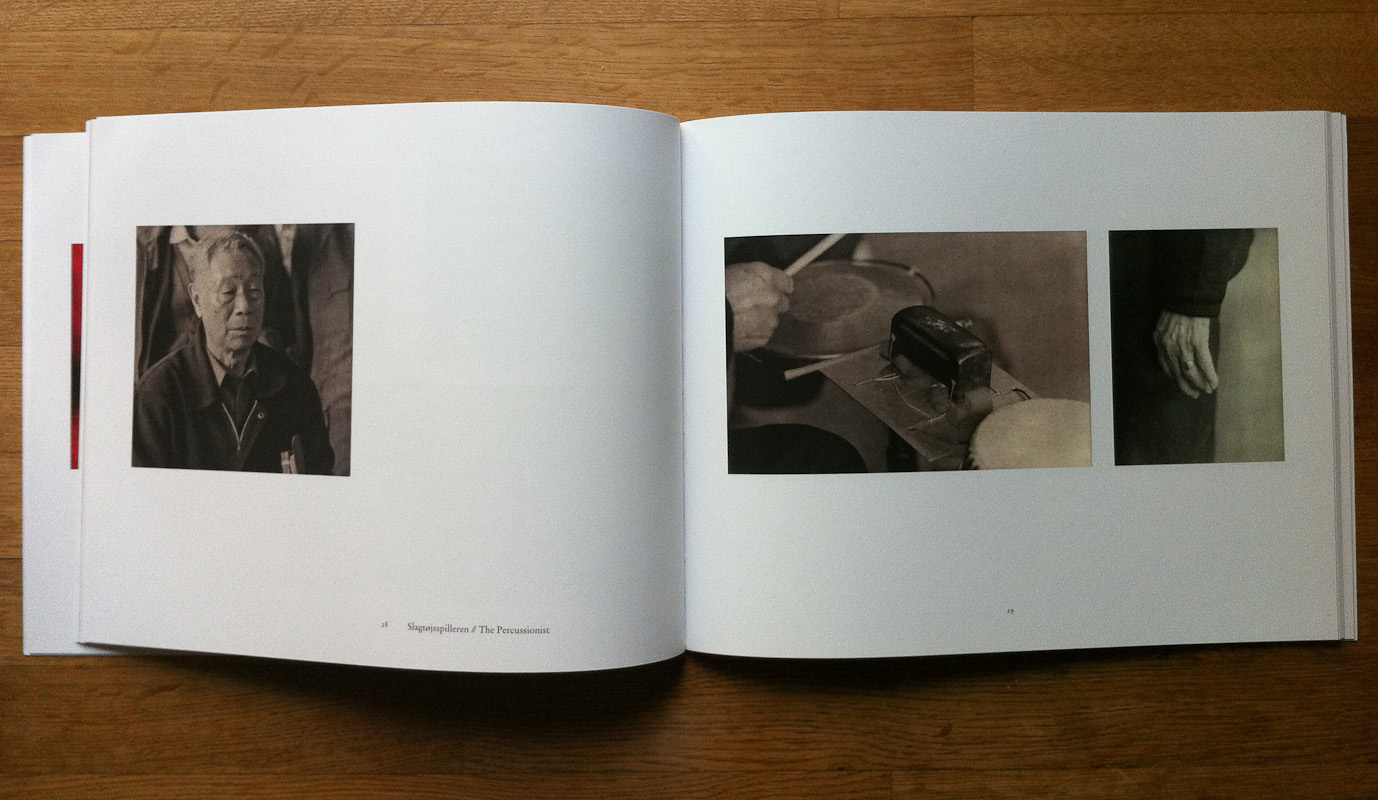 When I met Inger Lise Rasmussen at the Fotofest Paris portfolio review last November, one of the first things she said to me was "I'm not a photographer, I'm a print-maker." This distinction is worth keeping in mind when looking at her work. Going through her portfolio at the time, it was clear to me that each of her prints should be considered as objects rather than just as images. She makes her prints using a photo-gravure process and her background as a graphic artist comes through clearly in her compositions of multiple images on a single sheet of the rich, textured papers which she uses. I found the results to be quietly beautiful and very different to the other work which I reviewed at the time.
When I met Inger Lise Rasmussen at the Fotofest Paris portfolio review last November, one of the first things she said to me was "I'm not a photographer, I'm a print-maker." This distinction is worth keeping in mind when looking at her work. Going through her portfolio at the time, it was clear to me that each of her prints should be considered as objects rather than just as images. She makes her prints using a photo-gravure process and her background as a graphic artist comes through clearly in her compositions of multiple images on a single sheet of the rich, textured papers which she uses. I found the results to be quietly beautiful and very different to the other work which I reviewed at the time.
Given the importance of the print-making process to Rasmussen, I was curious how her work would translate into book form, particularly into the form of a fairly straightforward exhibition catalogue such as this one. Although I think she is being a little hard on her herself (and more than a little tongue-in-cheek) when she says "I'm not a photographer," I do think that her pictures are more interesting as graphic elements with a very particular atmosphere and texture than as photographic images.
In 2007 and 2008 Rasmussen made two trips to China to study the country's exploding urban growth in the cities of Beijing, Xian, Wuhan, Chongqing and Shanghai. The resulting collection, Brilliant City, is not broken down into separate sections for each city, but structured as a series of small chapters on different characteristic aspects of urban China. These fragments go from the 'big picture' of the cities' structures (old hutong neighbourhoods being torn down, cityscapes of new neighbourhoods of huge residential blocks) to the more detailed and human (a group of grasshopper collectors, a metal worker, a percussionist). Unfortunately, I found that the book suffered a bit from this fragmented structure: it felt like the series of vignettes that it contains didn't quite add up to a coherent or complex impression of the China's emerging mega-cities. Although the book is well printed, having seen Rasmussen's prints, I don't think the book quite manages to replicate the richness of the gravure tones and texture of her prints.
Brilliant City is at it's best when the pages of the book echo the graphic compositions of Rasmussen's prints. Her gravure technique is also better suited to the more intimate images (grasshopper collectors, a lone percussionist) than the sprawling cityscapes. In a chapter entitled 'Lost in Singing', an old woman singing fades gradually out of focus across a series of three images punctuated by a fourth image of an ancient stone, a sequence which manages to be both poetic and, frankly, strange.
What I enjoyed most about Brilliant City was seeing one of the hottest subjects in contemporary photography (urban growth in China) treated in a very different way from the many large-format formal studies that have appeared in recent years. Although Rasmussen uses old, some might even say antiquated, techniques this gives her work a more lyrical sensibility without misleading the viewer into thinking that these are images of the past. There is still a strong sense of this being China now. Although some of the subjects felt a little too obvious (the fading lanterns or the building sites), the book doesn't fall into the trap of romanticising the past and criticising it's modern replacement. It feels more like a slightly melancholy acceptance of the fact that China is undergoing a radical transformation, for better or for worse.
Inger Lise Rasmussen, Brilliant City. Aarhus Kunstbygning (Soft cover, 63 pages, black-and-white and colour plates, 2009).
Rating: Worth a look

